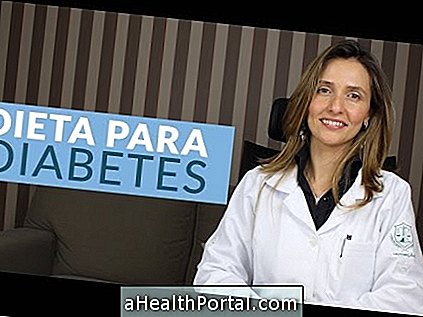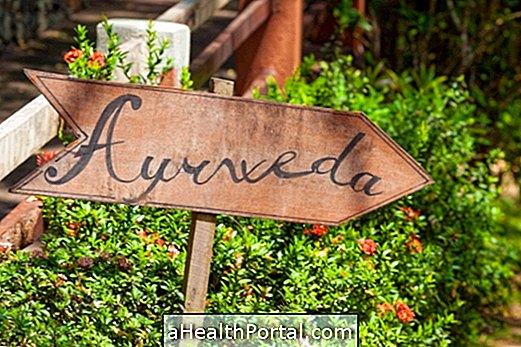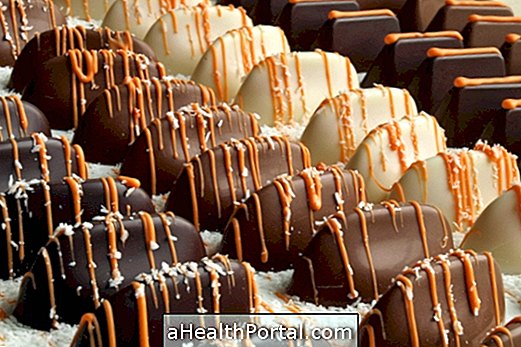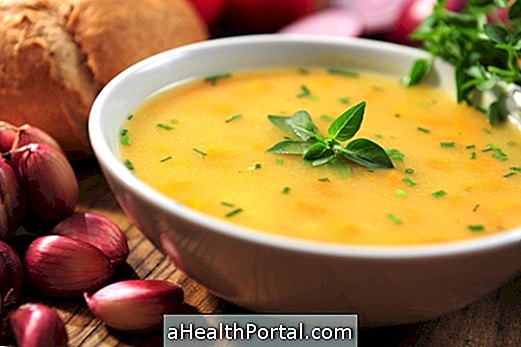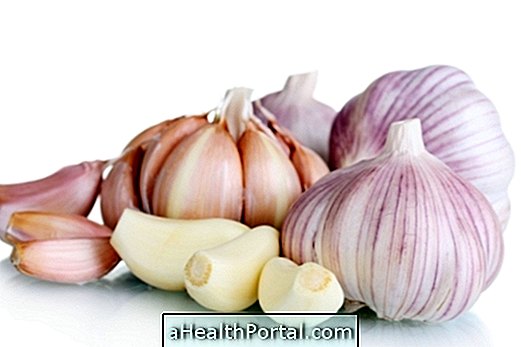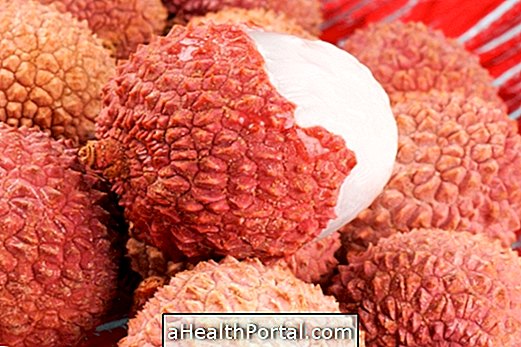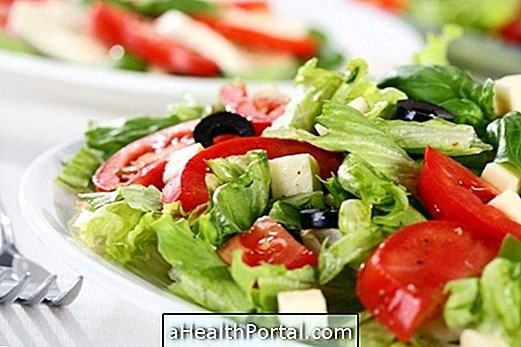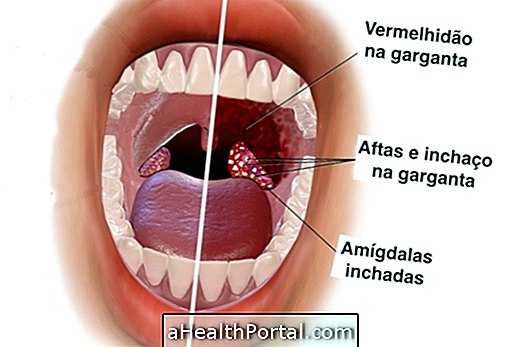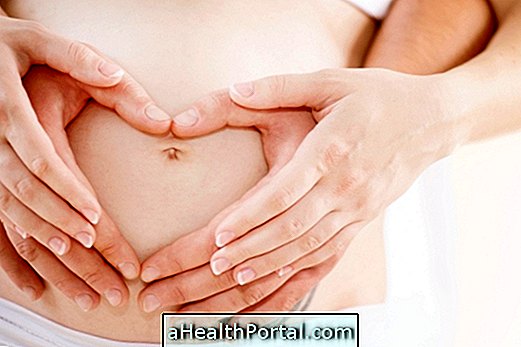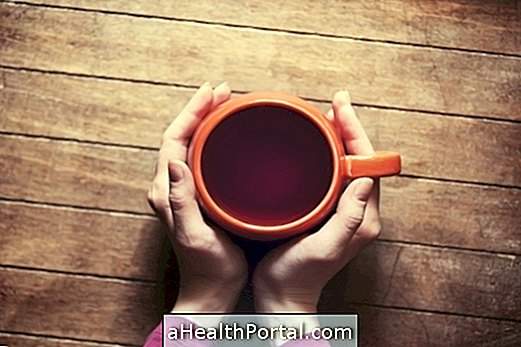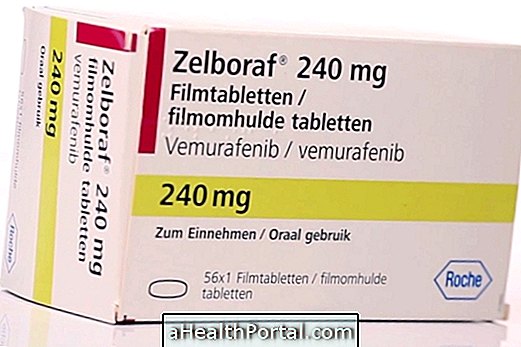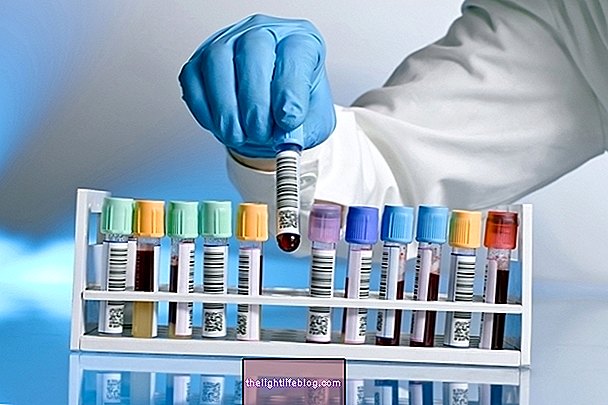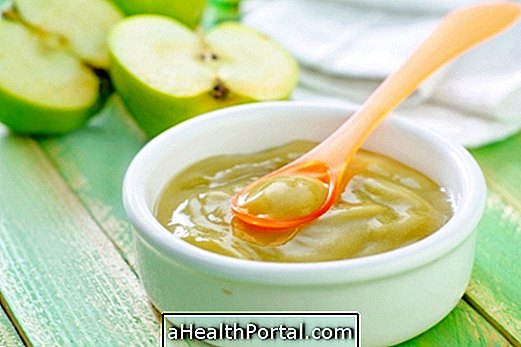Fruit rich in carbohydrates such as grapes, figs and dried fruits are not recommended for people with diabetes because they contain too much sugar increasing the chances of blood sugar spikes.
The best choice is to consume the fresh fruit, especially those that are rich in fiber or that can be consumed in bark such as mandarin, apple, pear and orange with bagasse, because the fiber helps to slow down the sugar that is absorbed, maintaining the glicemia controlled.
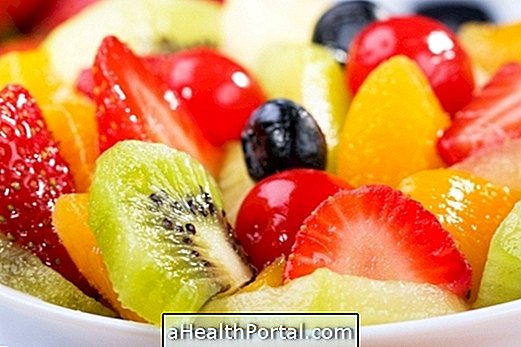
Fruits Allowed in Diabetes
Since in small quantities, all fruits can be consumed by diabetics, as this does not stimulate the increase of blood sugar. In general, it is recommended to consume 2 to 4 units per day, noting that 1 medium fresh fruit contains about 15 to 20 g of carbohydrates, which is also found in 1/2 cup of juice or 1 tablespoon of dry fruits.
See the table below for the number of carbohydrates in the fruits indicated for diabetics:
| Fruits | Carbohydrate | Fibers |
| Banana silver, 1 UND average | 10.4 g | 0.8 g |
| Tangerine | 13 g | 1.2 g |
| Wait | 17.6 g | 3.2 g |
| Orange bay, 1 average UND | 20.7 g | 2 g |
| Apple, 1 UND average | 19.7 g | 1.7 g |
| Melon, 2 medium slices | 7.5 g | 0.25 g |
| Strawberry, 10 UND | 3.4 g | 0.8 g |
| Plum, 1 UND | 12.4 g | 2.2 g |
| Grape, 10 UND | 10.8 g | 0.7 g |
| Red guava, 1 mean UND | 22g | 10.5 g |
| Avocado | 4.8 g | 5.8 g |
| Kiwi, 2 UND | 13.8 g | 3.2 g |
| Mango, 2 medium slices | 17.9 g | 2.9 g |
It is also important to remember that juice contains more sugar than fresh fruit and less fiber, which causes the hunger sensation to return soon and blood sugar rise more rapidly after ingestion.
Also, before practicing physical activity, it is also important to make a proper meal to prevent sugar levels from getting too low. Learn more at: What the diabetic should eat before exercise.
What is the best time to eat fruit
The diabetic should prefer to eat fruit shortly after lunch and dinner as a dessert. But it is also possible to eat a fruit rich in fiber, such as kiwi or orange with bagasse for breakfast or snacks provided that in the same meal the person eats 2 whole oranges, or 1 jar of natural yogurt, without sugar, with 1 tablespoon of for example. Guava and avocados are other fibers that the diabetic can eat without much concern for glycaemia. Check out more examples of fruit rich in fiber.
Fruits that should be avoided
Some fruits should be eaten in moderation by diabetics because they contain more carbohydrates or because they have less fiber, which facilitates the absorption of sugar in the intestine. The main examples are plum canned syrup, açaí pulp, banana, jackfruit, pineapple, fig and tamarind.
The following table indicates the amount of carbohydrate present in fruits that should be consumed in moderation:
| Fruit (100g) | Carbohydrate | Fibers |
| Pineapple, 2 medium slices | 18.5 g | 1.5 g |
| Papaya formosa, 2 medium slices | 19.6 g | 3 g |
| Grape raisin, 1 tablespoon | 14 g | 0.6 g |
| Watermelon, 1 medium slice (200g) | 16.2 g | 0.2 g |
| Khaki | 20.4 g | 3.9 g |
A good way to avoid the rapid rise in blood glucose is to consume the fruits along with foods rich in fiber, protein or good fats. such as chestnuts, cheese or in the dessert of meals that contain salad, such as lunch or dinner.
Can I eat dried fruits and oilseeds?
Dried fruits such as raisins, apricots and prunes must be consumed in small quantities, because although they are smaller, they have the same amount of sugar as the fresh fruit. In addition, it should be noted on the food label whether the syrup of the fruit has sugar or if sugar has been added during the process of dehydration of the fruit.
Oilseeds, such as nuts, almonds and nuts, have fewer carbohydrates than other fruits and are good sources of fats that improve cholesterol and prevent disease. However, they should also be consumed in small amounts, as they are quite caloric. See the recommended amount of nuts.
How Diabetes Food Should Be
Watch the video below and learn how to have a balanced diet to better control your blood glucose.
